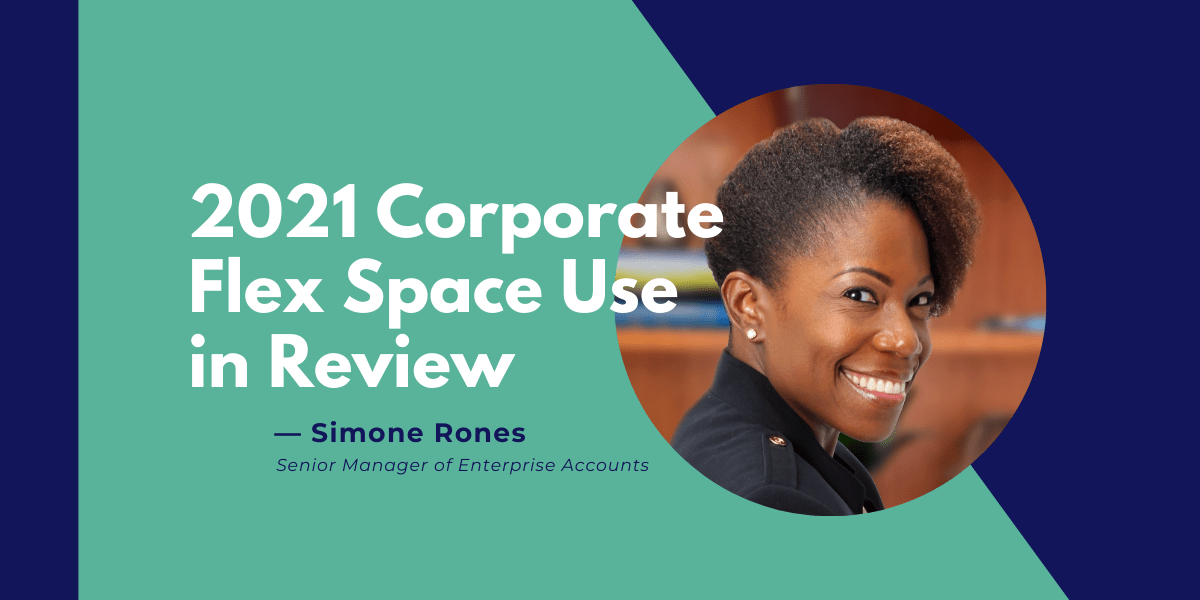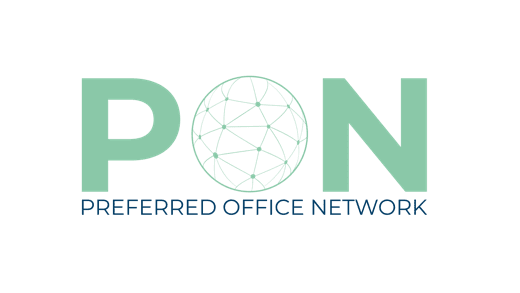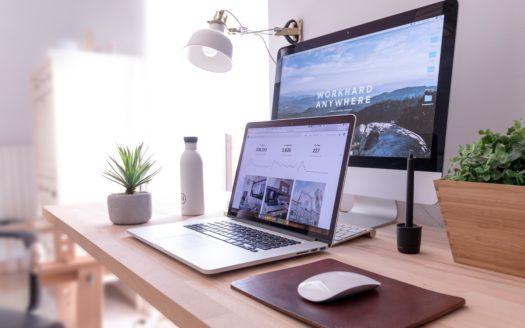
In what was yet another frenetic year for the flexible office industry, PON’s Senior Manager of Enterprise Accounts, Simone Rones, talked to us about new and emerging trends in the industry, highlights from the year, and how flexible workspace was used throughout the year.
As we gradually transitioned out of pandemic life and back into a new normal, Simone found that the most common use of flex space throughout 2021 was in private offices and private team rooms.
This comes as no surprise as these private offices and team rooms offer the peace of mind of having control over your environment, away from a shared space with the public.
“I think we saw consistency in mostly private office requests,” said Simone. “Meeting rooms [and] virtual [offices], will always be a part of it but the bulk of the use of flexible space is going to be private offices and team rooms.”
Traditionally, coworking has been perceived as a large, open space and floor plan with multiple users popping in and out of the space as they please.
With a large shift to private office and team room use across many portfolios, this began to challenge the idea and association that many had created around coworking.
Companies began to see flex space as a more viable option as they realized that the concept of coworking wasn’t just confined to placing their team within a large, shared space, surrounded by others.
“We found that companies are approaching the “idea” of coworking differently,” said Simone. “Most people think of the coworking concept as, ‘I will be in shared space with others outside of my organization’.”
“They did not want to be in large, open spaces, with the public, but they also did not want to break up their teams. Clients begin to request larger team rooms for their team members. We understand now that people still want the coworking concept [but] yet a concept that is dedicated solely to their organization,” she added.
While corporate teams explored getting their teams back into the office in 2021, it was still a year of uncertainty as new variants of COVID-19 spread.
Even with these concerns present, by placing health and safety procedures in place and being mindful of others, Simone found that flex space was utilized more in 2021 than in 2020.
“By the time we got into Q2 in 2021, people were a little more knowledgeable, and they had their company policies in place of how they would handle the spread of COVID, so we started to see more movement back into the office,” said Simone.
“People really wanted [a safe place to work] but also a space that allowed them to work collaboratively because their work still needed to be done, projects completed, and a lot of that work is a collaborative effort. Sometimes Teams and Zoom just won’t do it.”
“In 2021, we saw things move in a positive direction overall, as companies began to take more control of their protocols, so they could get their teams back into the workspace,” she added.
With a gradual return to the office throughout 2021, Simone also identified an emerging trend that we like to call ‘working closer to home’.
As individuals eyed a return to a physical office space, many looked to avoid long commutes of the past as well as public transportation which made the prospect of working closer to home even more popular.
“We got a lot of requests where the target addresses people are now providing are their own homes as they want to be within a 10-15-minute drive to work,” said Simone.
“A lot of our partners who are located outside of larger cities saw an uptick in business just for that reason. Some flexible office providers are now even looking into opening new locations in sub-markets because people want to be closer to home,” she added.
With the emergence of the ‘working closer to home’ phenomena as well as coworking becoming more private, Simone also identified a trend of self-management among employees of corporate companies that became popular in 2021.
“There’s this overall trend that I talk about, how there is a movement of self-managed and self-produced work product,” Simone said.
“Employees of companies are starting to realize, ‘Wait, we have a little bit of power in this industry, and we can dictate what we want [in terms of our work style]. These are the questions that people will ask when they are in job interviews like, ‘Do I have to come into the city?’, ‘Do you have satellite offices?’ ‘Will you support work from home?’,” she explained.
“I think that people will really begin to see that they can dictate how they use space, where they work, and that’s just going to change everything,” added Simone.
With the prospect of so much impending change – as well as changes in the last two years – Simone explained how important it is for flex space operators to continue to embrace the flexibility that has garnered them so much success over the years.
“At Preferred Office Network, we’re learning to be nimble, fluid, and willing to approach things differently when needed,” Simone said.
“Processes are great, but you have to be open-minded when a request comes in and think about, ‘How can we get this done. A requirement may be different than what we’ve done before, but how can we make it work?’ I think at PON, our mindset is evolving to simply, ‘How can we say yes?’,” she added.
While change and emerging trends can be overwhelming, Simone looked back at 2021 – and ahead to 2022 – with nothing but excitement and optimism.
“All this growth and optimism is exciting, and I cannot wait to be a part of it,” she said. “One of the things that COVID did, is it re-introduced a product, [flexible office space] to the public, that has been around for ages.”
“I feel like everyone should know that you can use office space in a flexible way, and I was surprised by how many people who did not know – or had heard about it, but misunderstood, how it is used. There were even people who were using it yet, did not understand all the ways they could purpose this awesome tool and how flexible, a workspace could be,” she explained.
“Although so many flex office providers took a temporary hit during COVID, people are discovering and re-discovering what flex office space is and I think we will see major growth in the market as a result,” she added.



